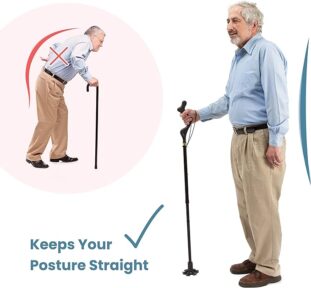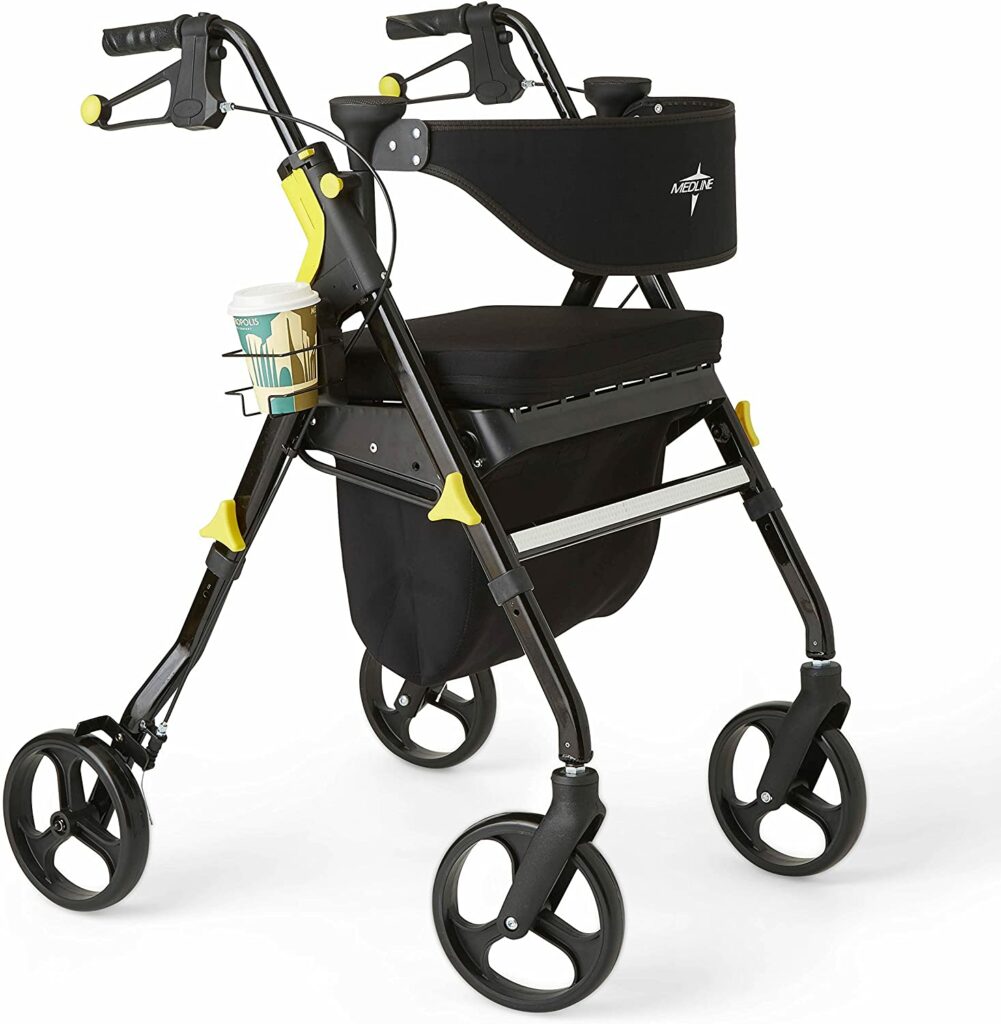One of the biggest concerns for many seniors are the effects of poor mobility. It’s not just about walking without wobbling—it’s about independence, confidence, and quality of life.
Getting older comes with its fair share of surprises—some good (finally, time to do what you want!) and some… less exciting (why does my knee sound like a popcorn machine?).
The truth is, mobility plays a huge role in everything from daily tasks to social activities. And while some challenges come with aging, losing mobility doesn’t have to be one of them.
Whether it’s simple exercises, assistive devices, or home modifications, there are plenty of ways to stay active and on the move.
This article covers the effects of poor mobility on seniors, the risks, and—most importantly—what you can do to fight back. Whether you’re facing mobility decline causes yourself or caring for a loved one, there’s plenty you can do to stay active and independent.
Why Effects of Poor Mobility Matter
Let’s be real—poor mobility doesn’t just mean “moving slower.” It sneaks up on you, making everyday tasks like getting out of a chair, climbing stairs, or even walking across the room feel like climbing Mount Everest.
And before you know it, it’s chipping away at your independence, health, and even your mood. Fortunately, you do not have to be powerless against it!
Physical Health benefits
Staying mobile isn’t just about getting from point A to point B—it’s about maintaining your freedom. The more you move, the more you can keep doing the things you love, whether that’s gardening, playing with grandkids, or just making a quick trip to the store without relying on someone else.
Physically, regular movement helps keep muscles strong, joints flexible, and the heart healthy. It can even reduce the risk of conditions like osteoporosis and heart disease.
Mental Health benefits
Mentally, staying active boosts mood, reduces stress, depression and sharpens cognitive function—because nobody wants to spend their golden years feeling foggy.
Social Health benefits
Socially, mobility is the key to staying engaged with family, friends, and community activities. Isolation is a real issue for many seniors, and keeping active helps prevent that.
The bottom line? The more you move, the better you feel, and the longer you maintain your independence.
The Hidden Dangers and Effects of Poor Mobility on Aging Adults
What Causes Mobility Issues in the Elderly?: Balance and Coordination Issues
One of the biggest dangers of mobility decline in old age? Falls. They’re the number one cause of injury among seniors, and they often lead to serious consequences like fractures, hospital stays, and reduced independence.
Unknown to many, balance issues can be a major contributing factor!. As you age, inner ear function and muscle strength decline, increasing the risk of falls.
And let’s be real—once you take a nasty tumble, it’s easy to become fearful of falling again, which can lead to moving less and that only makes mobility worse.
Effects of Poor Mobility on Daily Activities Caused by Age-related Conditions
Aging comes with a few curveballs, and mobility is often one of them. Many seniors experience joint stiffness, muscle weakness, and slower reflexes, making it harder to move with ease.
Conditions like arthritis, osteoporosis, and Parkinson’s can add extra challenges, causing pain, instability, or even loss of coordination.
Struggling to get around affects more than just physical movement. It can make simple activities—grocery shopping, visiting friends, even cooking—feel impossible. Over time, many seniors stop doing these things altogether, leading to isolation and frustration!
Tip: If getting out feels like a challenge, look into mobility aids or local transportation services that cater to seniors.
Chronic Pain and Muscle Weakness Cause Poor Mobility
Chronic pain and fatigue also play a role, making everyday tasks feel like a workout. But here’s the good news: understanding these challenges is the first step to overcoming them.
With the right strategies—like exercise, assistive devices, and home adjustments—you can keep moving safely and confidently.
Lack of movement can actually make pain worse. Many seniors dealing with mobility impairment effects suffer from stiff joints, muscle weakness, and chronic discomfort. The less you move, the more your body “forgets” how to function properly.
Pain relief strategies:
- Gentle stretching and yoga can improve flexibility.
- Heat therapy (like warm baths or heating pads) can ease stiff joints.
- Low-impact exercises like swimming or water aerobics reduce strain on joint
The Impact on Mental Health Due to Fear of Falling
It’s not just your body that takes a hit—your mind does too. Fear of falling and its psychological impact is a biggie!! Studies show that poor mobility and depression often go hand in hand. Losing the ability to move freely can lead to feelings of helplessness, anxiety, and even social withdrawal.
What can help?
- Don’t be afraid to ask for help. Family, friends, and caregivers can offer both physical and emotional support.
- Stay as active as possible—movement releases endorphins (a.k.a. natural mood boosters!).
- Keep up with hobbies that bring you joy, even if they need some modification.
Hidden Underlying Health Issues
Sometimes, mobility challenges for seniors are caused by underlying health issues like arthritis, nerve damage, or medication side effects. Regular doctor visits can help catch and address these problems early.
How to Assess Mobility Decline in Old Age
Learning how to assess your own mobility needs or that of a loved one can go a long way in catching and preventing slips and fall before it affects independences. Noticing a little extra stiffness in the morning? Finding it harder to climb stairs or keep up on a walk? These small signs can hint that mobility is starting to decline.
One simple way to check mobility is by testing everyday movements. Can you get up from a chair without using your hands? Walk across a room without feeling unsteady? If these feel difficult, it might be time to focus on strengthening muscles and improving balance.
For a more detailed look, a professional assessment from a physical therapist or occupational therapist can help pinpoint areas that need improvement. They can suggest specific exercises, mobility aids, or home modifications to make life easier.
Mobility isn’t all-or-nothing—it’s a spectrum. And with a little awareness and the right strategies, you can keep yourself on the move for years to come. Let’s explore these strategies………
Exercises and Activities Help Improve the Effects of Poor Mobility
You don’t have to train for a marathon to keep moving—small, consistent exercises can work wonders for mobility. The goal is to strengthen muscles, improve balance, and keep joints flexible so everyday activities feel easier.
Low-impact Exercises: Walking is one of the best ways to stay active, even if it’s just around the block. Swimming and water aerobics are great low-impact options that take pressure off the joints while improving strength. Yoga and tai chi help with balance and flexibility, making you less likely to take a tumble.
- Walking 10k Steps Per Day: 10 Easy Practical Senior Tips
- Easily Walk 10k Steps Daily for Beginners: Correct Gear
- Health Benefits of Walking 10000 Steps Daily: Amazing 13
Strength and Balance Training (even with light weights or resistance bands): Can help maintain muscle mass, which naturally decreases with age.
Muscle loss accelerates mobility decline, but strength training can slow it down. Start with light resistance bands or bodyweight exercises like:
- Seated leg lifts
- Wall push-ups
- Step-ups using a sturdy surface
Balance training can prevent falls and boost confidence. Try:
- Standing on one foot (hold onto a chair if needed!)
- Heel-to-toe walking
- Gentle tai chi or yoga
Stretching and Flexibility Routines: Don’t forget stretching—simple movements like toe touches, seated hamstring stretches, or gentle neck rolls can all keep stiffness at bay.
Adaptive exercises for Seniors with Limited Mobility: These chair exercises are a lifesaver not only for seniors with limited mobility, but for anyone wishing to squeeze in some movement anytime and anywhere.
The key? Find activities you enjoy and do them consistently! Try the following:
- Set a timer to stand up and stretch every 30 minutes.
- Take short walks—even if it’s just around the house.
- Do chair exercises while watching TV.
Assistive Devices and Technology for Mobility Decline in Old Age
Sometimes, a little extra support goes a long way. Assistive devices are not about “giving in”—they’re about staying independent and safe. There’s no shame in using assistive devices for mobility like walkers, canes, or grab bars. They’re there to help you stay independent, not hold you back.
Canes, Walkers, and Rollators: For starters, canes and walkers can provide stability if balance is an issue. Rollators (walkers with wheels) add even more ease, especially for those who need a break while walking.
Wheelchairs and Motorized Scooters: If walking becomes too difficult, wheelchairs and motorized scooters can help maintain independence without you or your loved one having to rely on others.
Wearable technology (fall detection, smart insoles, GPS trackers): Technology is also changing the game. Wearable devices like fall-detection devices, fitness trackers and GPS-enabled shoes can provide safety and peace of mind.
Smart Home Modifications for Safety: Devices like motion-activated lights, grab bars, and stairlifts—make moving around easier and safer. Rig up your entire home – kitchen, bedroom, bathroom, and stairways for safety.
The bottom line? The right tools can keep you mobile, independent, and confident for years to come.
Make Lifestyle Adjustments for Better Mobility
Mobility isn’t just about exercise—it’s a whole-body effort. The right lifestyle habits can make movement easier and keep your joints happy.
Proper Nutrition for Joint and Muscle Health: Eating anti-inflammatory foods like leafy greens, berries, and omega-3-rich fish can help keep joints and muscles strong.
Hydration and its Role in Preventing Cramps and Fatigue: Staying hydrated is just as important—dehydration can lead to cramps, dizziness, and fatigue. Hydration is also beneficial for bladder and kidney health and many chronic conditions.
The Importance of Good Footwear: Investing in good footwear is another game-changer. Supportive, non-slip shoes can improve stability and reduce the risk of falls – get rid of those worn-out slippers!
Sleep and Recovery to Maintain Mobility: Sleep also plays a big role in mobility especially with changes in the body with age. When you’re well-rested, your muscles recover better, and your balance improves. If pain or discomfort is keeping you up, a better mattress or supportive pillows might help.
Avoid a Sedentary Lifestyle: Small adjustments, like pacing yourself during the day and avoiding long periods of sitting, can also keep stiffness away. Mobility isn’t just about moving—it’s about setting yourself up for success every day.
Moving More and Sitting Less is the key to overcoming mobility problems? Keep moving! Even small bursts of activity throughout the day can make a difference. Try the following:
- Set a timer to stand up and stretch every 30 minutes.
- Take short walks—even if it’s just around the house.
- Do chair exercises while watching TV.
General Home Safety to Prevent Falls and Injuries
For mobility decline in old age, falling isn’t just a minor mishap—it can lead to serious injuries that take a long time to heal. The good news? Most falls are preventable with a few smart adjustments.
Fall-Proof Your Home: Clear clutter, add non-slip mats, and install grab bars in key areas like the bathroom. Good lighting is also essential as motion-sensor nightlights can help prevent nighttime stumbles. Fall-proof the kitchen, bedroom, main living area, and areas of the home frequently navigated.
Practice Safe Movement Techniques (how to get up after a fall, proper posture): When moving around, practice safe techniques, like taking your time when standing up and using support when needed. Strength and balance exercises can also make a big difference in keeping you steady on your feet.
Fall Prevention Programs and Classes: If fear of falling is holding you back, consider a fall-prevention program. Many senior centers and physical therapists offer classes designed to boost confidence and improve stability. Of course don’t forget about assistive devices.
Transportation Mobility Friendly Options
Staying mobile isn’t just about walking—it’s also about getting where you need to go safely and conveniently. If driving is still an option, regular vision and reaction-time checks are a must. But if driving becomes difficult, there are plenty of alternatives.
Public transportation often offers senior discounts and accessibility features like ramps and priority seating. Rideshare services like Uber and Lyft have senior-friendly options, and some local nonprofits provide free or low-cost rides for doctor’s appointments and errands.
For those who travel often, mobility-friendly travel options—like senior bus tours or accessible train services—can make getting around stress-free. The key is to find a reliable method that keeps you connected to the places and people that matter most.
Support Systems and Resources
You don’t have to navigate mobility challenges alone—there’s a whole network of support out there. Physical therapists can create personalized movement plans to help improve strength and balance, while occupational therapists can recommend home adjustments to make daily life easier.
Support groups (both in-person and online) provide encouragement and shared experiences from others facing similar mobility challenges. Local senior centers often offer exercise classes, transportation assistance, and wellness programs designed to keep you moving.
Financial aid programs can also help cover the cost of mobility aids, home modifications, or transportation services. Government resources, nonprofit organizations, and even some insurance plans offer assistance for seniors in need.
The key takeaway? Help is available. You just have to know where to look—and asking for support is a sign of strength, not weakness.
Conclusion: Alarming Effects of Poor Mobility
The effects of poor mobility don’t have to be inevitable. While aging does come with its fair share of challenges, staying active, strengthening muscles, and making small lifestyle changes can keep you moving longer. So, don’t wait.
This guide covers everything you need to know about senior mobility—what causes it, effects, how to improve it, and practical tips to keep you moving with ease.
Related Articles
- Fatigue and Seniors – 5 Shocking Red Flags
- 7 Best Fall Alert Devices for Seniors
- How To Choose a Rollator. Safety Tips You Must Consider
- Top Causes of Inflammation in the Body – Everyone Must Know
- The Best Kitchen Safety Products for Seniors – Perfect Gifts
FAQs for Effects of Poor Mobility
What are the first signs of the effects of poor mobility?
The early symptoms of poor mobility include difficulty standing up, trouble climbing stairs, unsteady walking, and muscle weakness.
How does mobility decline in old age affect mental health?
Poor mobility and mental health are closely linked. Limited movement can lead to depression, anxiety, and social withdrawal.
Can you improve mobility in old age?
Absolutely! With regular exercise, stretching, and strength training, you can slow down or even reverse some of the effects of decreased mobility.
What causes mobility issues in the elderly?
Mobility decline causes include muscle weakness, arthritis, osteoporosis, neurological conditions, medication side effects, chronic pain, and past injuries. Lifestyle factors like inactivity, poor nutrition, and obesity also contribute to mobility challenges for seniors.




